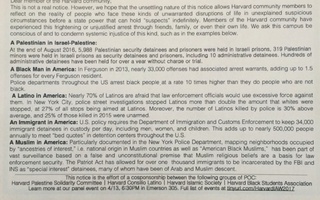You know the scene: Your churning cranium beginning to settle after a breakneck physics lecture, you conserve energy through the Science Center’s revolving door and are greeted by a fellow student sporting a colorful flyer and a smile. You grimace and avoid eye contact in a calculated display of disinterest, but to no avail. The student hands you a flyer, you thank him and pocket it, and you say you’re pretty sure you have something that night, but you’ll check your calendar. 200 feet later, the flyer sits among its brothers at the bottom of a recycling bin.
Students on both ends of a flyer exchange do not make a meaningful connection. A tremendous waste of paper, flyering is rarely more than a brusque, sometimes even rude five-second-long exchange in which students grab flyers on the move, barely waiting to hear the time and place of an event before they enter the Science Center.
By all accounts, flyering is decidedly ineffective at generating student interest in on-campus events. Flyering’s goal is to reach as many of the throng of students by the Science Center as possible; this approach emphasizes quantity, not quality, and it is this fatal flaw that renders flyering ineffective. In fact, flyering suggests a fundamental flaw in the way that student groups—perhaps even students—connect with their peers. It is time that organizations reimagine the way that they publicize to the student body, from concerts to discussions to recruitment.
The best networks of connections, in student relationships and in organizational ones, are characterized not by the size of the network, but rather by the strength of the connections. Students who put more time into cultivating fewer friendships, making it possible for them to follow up on productive or interesting lunches in dining halls, have a richer network of connections than a student with many friends but not enough time to devote to them. Likewise, organizations should seek to form relationships with students that extend beyond mass-produced publicity emails sent over dorm lists and meaningless handoffs of flyers. Organizations should form relationships in the same way that students do, with a focus on developing quality relationships with the student body that grow over time.
The strongest connections that students make with each other are experiential, based in bonding that is exciting in the moment and creates vivid memories for the future. Organizations seeking to foster meaningful relationships should strive to create these bonding experiences among the student body as well, and depart from the overdone and forgettable approaches that are staples of organizational outreach today.
How can organizations achieve this goal? Organizational outreach should be liaison-based: Student ambassadors, not flyers, should connect the organization with its audience. These ambassadors should help organizations embark on a program of experiential outreach by implementing a representative system that allows students to experience membership in an organization as a method of recruitment.
For example, faith and discussion based groups could send a student representative to dining halls with the purpose of prompting thoughtful conversation. These dialogues could serve to illustrate what a typical discussion at a group event might look like, and might result in increased student interest after their participation. Though the outreach effort might only reach a small group of students, these students would be more likely to attend—and perhaps more likely to become active members of the organization.
Performance groups that seek to draw large crowds could also benefit from an overhauled publicity approach. While publically available posters with performance dates and times would still be necessary, performance groups could develop a more dedicated and dependable following by giving students small samples of a performance prior to a show. Dance groups could give sneak previews in the Science Center Plaza, as some already do, while vocalists might perform small sections of their repertoire in a public space. Performance groups might elicit more popular interest if they intrigued an audience before a show as well as during it.
However the changes are made, the impersonal nature that is the current outreach model for most Harvard clubs could benefit from a shift in focus. Instead of trying to inform as many students as possible about an event, organizations might be better served by impassioning a more aerodynamic body of students, creating fewer, perhaps, but increasingly ardent subscribers to an organization’s activities.
Organizations are unlikely make the change to a more personal outreach approach quickly; in fact, many may keep to the current model of mass produced outreach for the foreseeable future. But organizations looking to provide a boost to their attendance figures could look to this more customizable approach to invigorate attendance. With a more invested base of supporters, these student groups might be able to leapfrog to the vanguard of public relations, bolstering both attendance at group events and the organization’s standing on campus.
Dhruv A. Pillai ’17 is a Crimson editorial writer in Winthrop House.
Read more in Opinion
Don't Be Afraid of the DarkRecommended Articles
-
No HeadlineThe fall concert of the Glee Club and Pierian Sodality will be given in Sanders Theatre this evening, and a
-
Freshman Musical Clubs.In view of the present excitement over the recent action of the faculty prohibiting the freshman musical clubs from giving
-
No HeadlineThe CRIMSON is asked to call attention to the serious lack of interest taken by the Freshman class in its
-
A Correction.In the report of the last meeting of the Athletic committee, published in Wednesday's CRIMSON, the resulution adopted by them
-
 Fake ‘Investigation Unit’ Notice Sparks Controversy, Apologies
Fake ‘Investigation Unit’ Notice Sparks Controversy, Apologies













